© BD PERIPHERIQUE / BE IN OPEN / TEXTS ON FASHION ISSUE 1


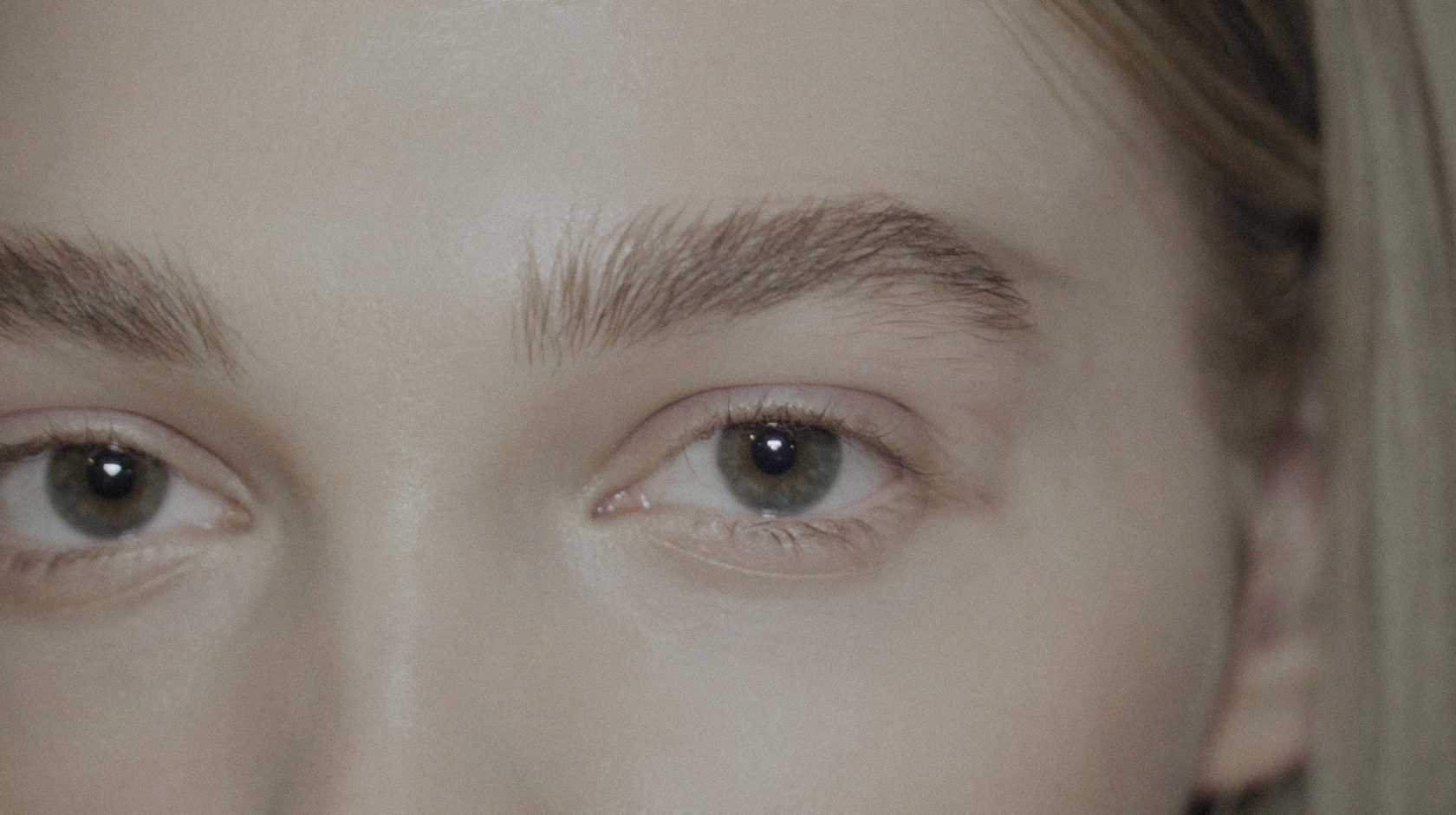
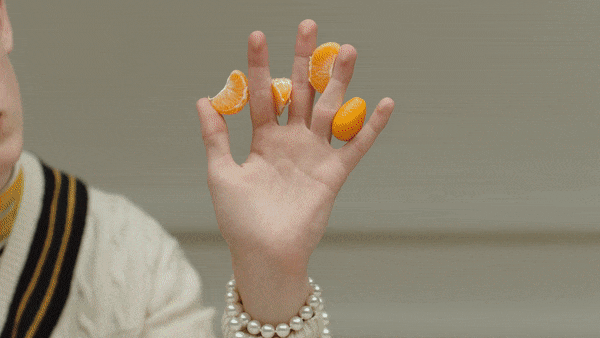

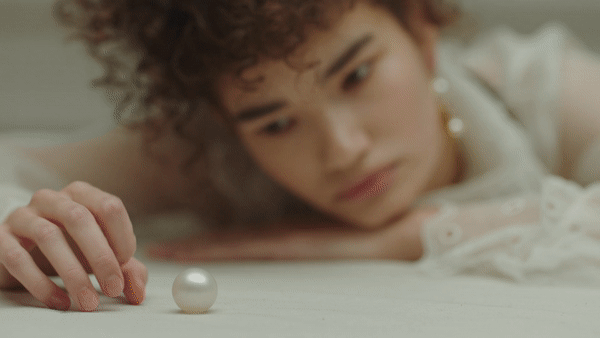
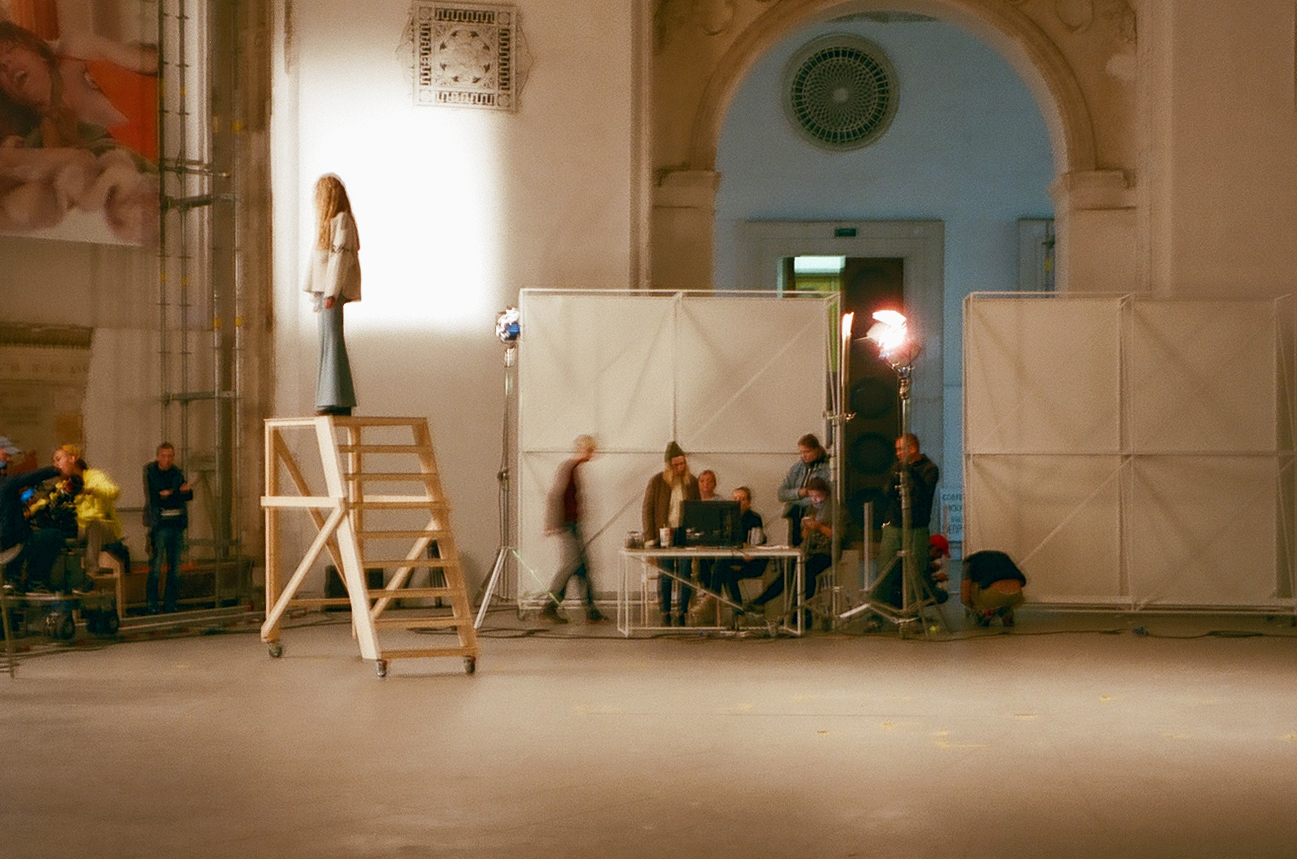
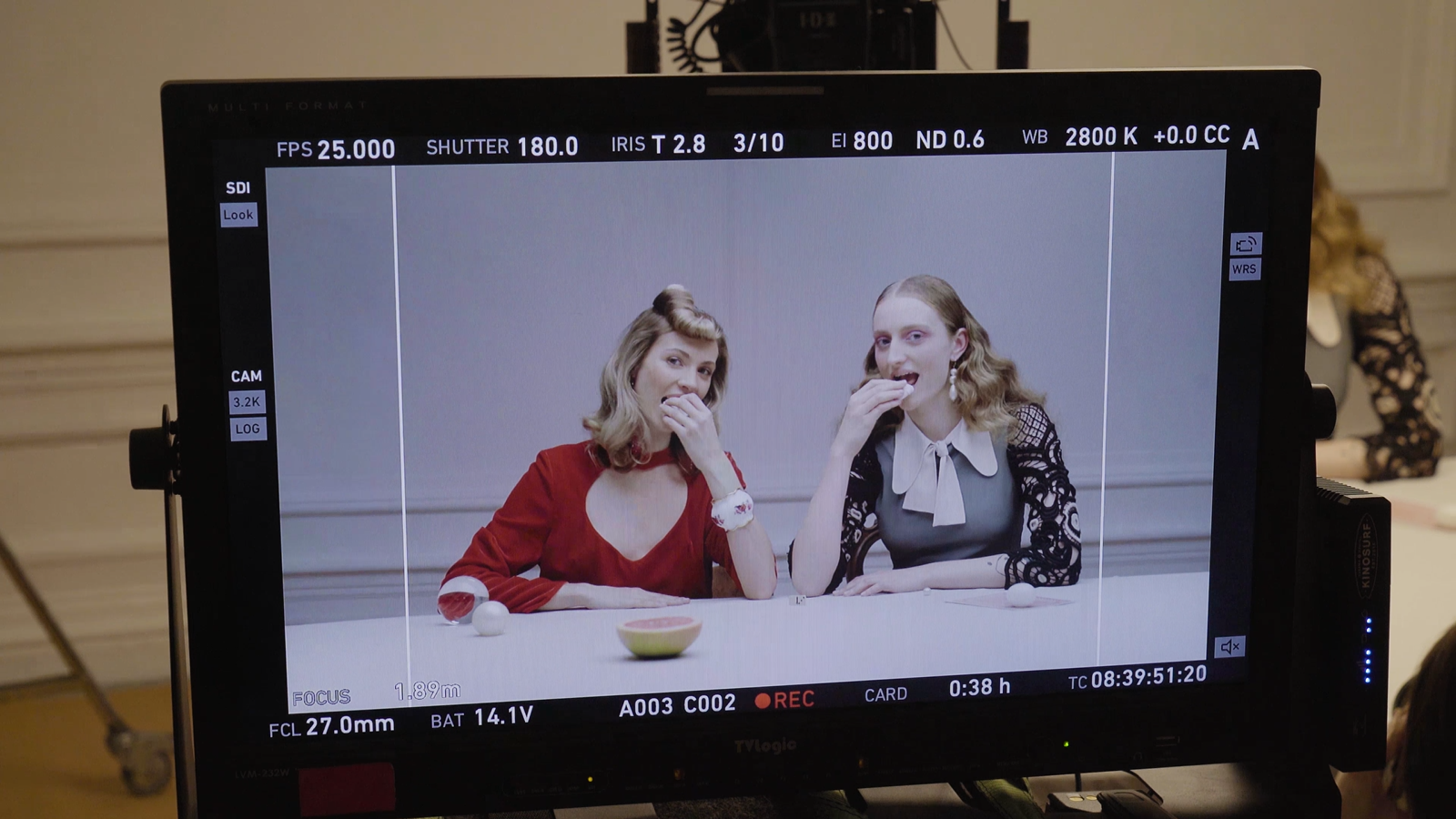
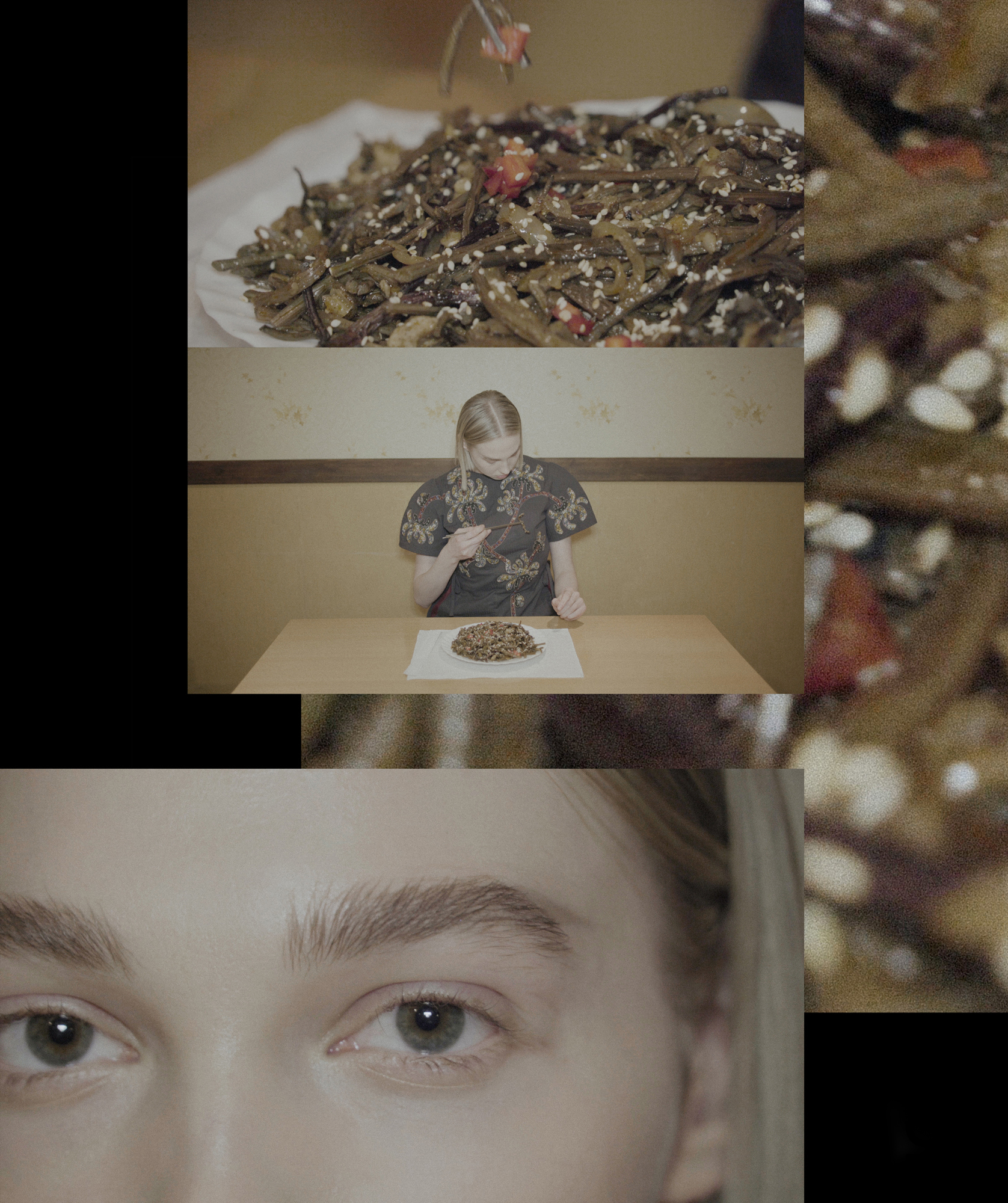
ON FASHION VIDEOGRAPHY
IN EUROPE AND AMERICA, IT IS EQUALLY IMPORTANT FOR A BRAND TO MAKE BOTH A LOOKBOOK AND A VIDEO CAMPAIGN. IN RUSSIA, FASHION FILMS ARE BEING SHOT EITHER BY LUXURY BRANDS THAT HAVE FUNDS FOR EXPERIMENTS OR, ON THE CONTRARY, BY YOUNG AND INDEPENDENT BRANDS THAT ARE TRYING TO STAND OUT. WE HAVE DECIDED TO FIND OUT HOW AND WHY FASHION VIDEOS ARE MADE IN RUSSIA AND WHAT THE DIFFERENCE BETWEEN A NON-COMMERCIAL PROJECT FOR A SMALL BRAND AND A COMMERCIAL WORK FOR A LARGE COMPANY IS.
TEXTS ON FASHION
New media create new formats. Content perception algorithms change along with them. Let's follow the evolution of Instagram, for example. In 2010, we could only post photos; three years later, short videos appeared in the feed. We were reluctant to play them and then the videos began to play automatically; now we rarely stop them. The volume of mobile traffic continues to grow, along with the mobile Internet speed, which currently allows loading much more. Stories, live broadcasts and IGTV with hour-long videos: Instagram makes us watch more and more.
Through the efforts of Eva Chen, the fashion director of the most visual social network, Instagram has become a powerful tool for promoting fashion brands. A couple of months ago, the actively growing YouTube created a similar position for Derek Blasberg. We can now expect new YouTube channels of fashion insiders and purchases to be available with one click, directly from the videos.
According to Pew Research Center, 85% of all teenagers between the ages of 13 and 17 regularly visit YouTube, while Instagram is used by 72% of the respondents. Based on the statistics from Think with Google, 40% of all YouTube users access this platform to learn more about the products they like before buying them. Not to mention the fact that the availability of video content on a website page can increase its organic traffic through search engines by 157%.
In Europe and America, it is equally important for a brand to make both a lookbook and a video campaign (to make sure, simply visit the website of any global brand).In Russia, fashion films are being shot either by luxury brands that have funds for experiments or, on the contrary, by young and independent brands that are trying to stand out.
Through the efforts of Eva Chen, the fashion director of the most visual social network, Instagram has become a powerful tool for promoting fashion brands. A couple of months ago, the actively growing YouTube created a similar position for Derek Blasberg. We can now expect new YouTube channels of fashion insiders and purchases to be available with one click, directly from the videos.
According to Pew Research Center, 85% of all teenagers between the ages of 13 and 17 regularly visit YouTube, while Instagram is used by 72% of the respondents. Based on the statistics from Think with Google, 40% of all YouTube users access this platform to learn more about the products they like before buying them. Not to mention the fact that the availability of video content on a website page can increase its organic traffic through search engines by 157%.
In Europe and America, it is equally important for a brand to make both a lookbook and a video campaign (to make sure, simply visit the website of any global brand).In Russia, fashion films are being shot either by luxury brands that have funds for experiments or, on the contrary, by young and independent brands that are trying to stand out.
We have talked to two directors, Nadia Bedzhanova and Gina Onegina, to find out how and why fashion videos are made in Russia and what the difference between a non-commercial project for a small brand and a commercial work for a large company is.
Gina Onegina has told us about the making of video showcases for the Central Department Store of Moscow (TSUM), the search for ideas, the casting and the intricacies of working with the team and about how the production of visual content has changed in Russia. Nadia Bedzhanova has described her work for the making of the film for Jenya Kim and told us how new media formats create the new visual culture.
Gina Onegina has told us about the making of video showcases for the Central Department Store of Moscow (TSUM), the search for ideas, the casting and the intricacies of working with the team and about how the production of visual content has changed in Russia. Nadia Bedzhanova has described her work for the making of the film for Jenya Kim and told us how new media formats create the new visual culture.
© 2018 BE IN OPEN, ТЕКСТЫ О МОДЕ, ВЫП.1
GINA ONEGINA
Director: Gina Onegina, creative director of The Blueprint, videomaker for Vogue, Esquire, Harper's Bazaar, TSUM
Film: TSUM - Family Christmas
Duration: 3 minutes
Budget: confidential
Team: over 50 people
Film: TSUM - Family Christmas
Duration: 3 minutes
Budget: confidential
Team: over 50 people
This project started with me getting acquainted with Natasha Goldenberg, the creative director of TSUM. TSUM has previously made video showcases, but with Natasha only as the stylist. As soon as she got the opportunity to bring in her vision, she called me and my team.
IDEA
We were given carte blanche with a single condition: it had to be a Christmas-themed video. This is how the concept was born of a strange festive table with fine food, champagne, and well-dressed people. The video had to be broadcast from the TSUM windows to the outside. I imagined a New Year's family table, with a variety of characters, resembling every other family: there is always a strange relative, someone trying to leave early, or people with a specific manner of giving toasts. Here, we were free to create many different images, use many different styles.
Natasha immediately approved the idea, but then we had slightly different opinions on how it had to look. I wanted to avoid any wrapped gifts or a Christmas tree with balls. My idea was to create the New Year's mood without any Christmas paraphernalia. This video showcase was not supposed to irritate anyone passing by. I am always anxious and thrilled to hear the comments of those people who cannot afford luxury things and become upset when they see that it is all very expensive and luxurious. Here, we managed to avoid this negative wave that covers every other expensive store. It turned out quite nice, but very modest, without any flying dresses, palaces and other overabundance.
Natasha immediately approved the idea, but then we had slightly different opinions on how it had to look. I wanted to avoid any wrapped gifts or a Christmas tree with balls. My idea was to create the New Year's mood without any Christmas paraphernalia. This video showcase was not supposed to irritate anyone passing by. I am always anxious and thrilled to hear the comments of those people who cannot afford luxury things and become upset when they see that it is all very expensive and luxurious. Here, we managed to avoid this negative wave that covers every other expensive store. It turned out quite nice, but very modest, without any flying dresses, palaces and other overabundance.
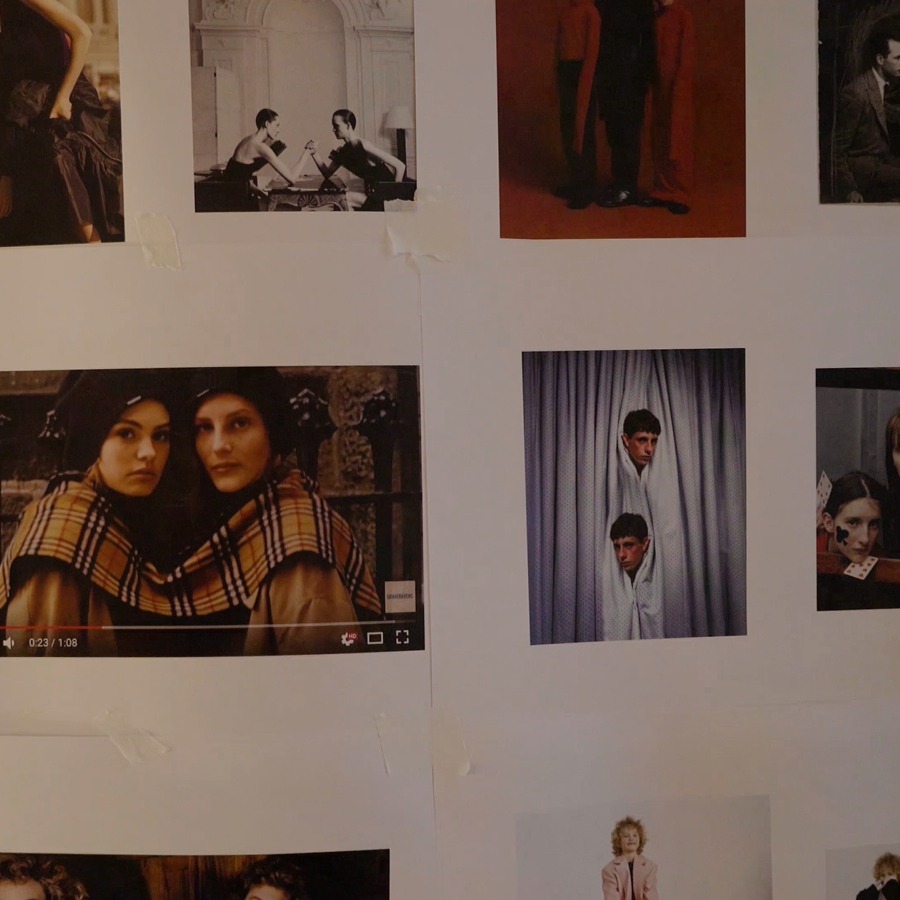



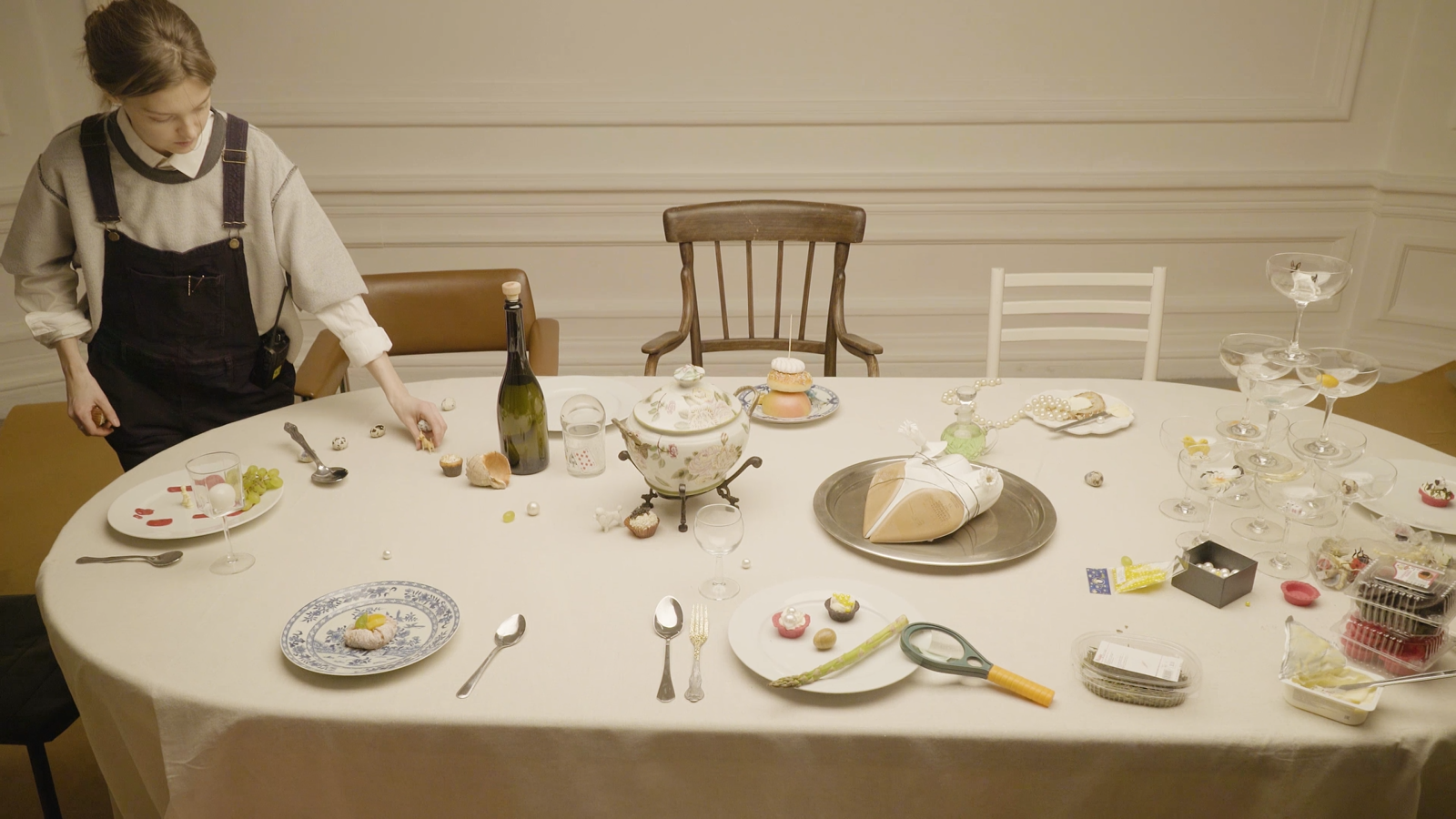

This is a difficult moment in the work: you describe an idea, and other people perceive it differently, offer their own versions, which they believe to be better. The result turns out absolutely different from what you had in mind at the beginning. Compromising may be a bad thing. In the director's work, I know that sometimes it is better not to listen to anyone. However, for me, it is very difficult; I always support involving as many people as possible in my work.
My past experience as an art director tells me that work, in which more people are involved, will be perceived better. I am always in favour of receiving suggestions from everyone, including the lighting crew. And yet, there is very little initiative in the Russian fashion industry. These are mostly people who can do what you ask and nothing more. At the same time, people with initiative can be very difficult to work with if their suggestions are rejected.
There are many specific features to teamwork in general, and it all becomes professional work only after you have collected a team of like-minded people around you who can take your idea to a new level.
My past experience as an art director tells me that work, in which more people are involved, will be perceived better. I am always in favour of receiving suggestions from everyone, including the lighting crew. And yet, there is very little initiative in the Russian fashion industry. These are mostly people who can do what you ask and nothing more. At the same time, people with initiative can be very difficult to work with if their suggestions are rejected.
There are many specific features to teamwork in general, and it all becomes professional work only after you have collected a team of like-minded people around you who can take your idea to a new level.
CASTING
After the idea has been discussed, my favourite process of casting begins. I really enjoy finding new faces or taking those too recognizable and completely transforming them with a new image.
In this project, it was important to consider the models TSUM works with. It was initially very clear what people of what age and type we needed to demonstrate the clothes. For example, as regards the men's clothing sold in TSUM, it is either executive realness or, conversely, very fancy clothes. We had to come up with an appropriate character and select a person to handle this clothing. I noticed Ambartsum Kabanyan at a party once; he is so tall, with these long fingers. I knew he had to be in this video in the role of some foreign guest, the groom of any of the girls, or just as an odd man.
In this project, it was important to consider the models TSUM works with. It was initially very clear what people of what age and type we needed to demonstrate the clothes. For example, as regards the men's clothing sold in TSUM, it is either executive realness or, conversely, very fancy clothes. We had to come up with an appropriate character and select a person to handle this clothing. I noticed Ambartsum Kabanyan at a party once; he is so tall, with these long fingers. I knew he had to be in this video in the role of some foreign guest, the groom of any of the girls, or just as an odd man.
On the one hand, you have a description of characters; on the other hand, there is the actual casting procedure. Of course, some people were so bright and different, that we had to invent new characters specifically for them. For example, we had this model Yulia who was so beautiful that I could have built the entire image around her beauty alone. And yet, we thought that she had to have a twin sister, with not too much liking between the two. Their images were to be built not on the fact that they are beautiful, but on the fact that they are similar and interact with each other, demonstrating different aspects of the same character type; two beautiful blondes with wavy hair.
TEAM
This film for TSUM became my first experience with a team of over 50 people and with professional actors involved in addition to the models.
I was very excited when I realized I would work with ten characters, with real actors, children, and celebrities among them. I was not sure if I had sufficient strength and communication skills to talk to them all day and explain them what to do, if I would be able to complete the images I had invented in my head, or how difficult it would be to embody them through real people. Eventually, it turned out to be the most pleasant experience. After all, you do not only give, but also get back a lot of proper inspiration. Previously, I did not understand the strain of the people on the other side of the camera, how much effort they put in even if they do not do anything except for sitting all dressed up in a pose. Now, I understand it perfectly.
I was very excited when I realized I would work with ten characters, with real actors, children, and celebrities among them. I was not sure if I had sufficient strength and communication skills to talk to them all day and explain them what to do, if I would be able to complete the images I had invented in my head, or how difficult it would be to embody them through real people. Eventually, it turned out to be the most pleasant experience. After all, you do not only give, but also get back a lot of proper inspiration. Previously, I did not understand the strain of the people on the other side of the camera, how much effort they put in even if they do not do anything except for sitting all dressed up in a pose. Now, I understand it perfectly.
FOR A FASHION VIDEO, YOU DO NOT NEED TO INVENT A SOLID NARRATIVE, BUT YOU MUST BE ABLE TO CLEARLY DESCRIBE THE IMAGE IN SEVERAL SENTENCES SO THAT THE ACTOR OR MODEL CAN FEEL AND UNDERSTAND THE CHARACTER. THIS IS VERY IMPORTANT; HALF OF THE SUCCESS IS WHEN YOU HAVE THIS IMAGE IN YOUR HEAD AND ARE CAPABLE OF PROPERLY PUTTING IT INTO WORDS
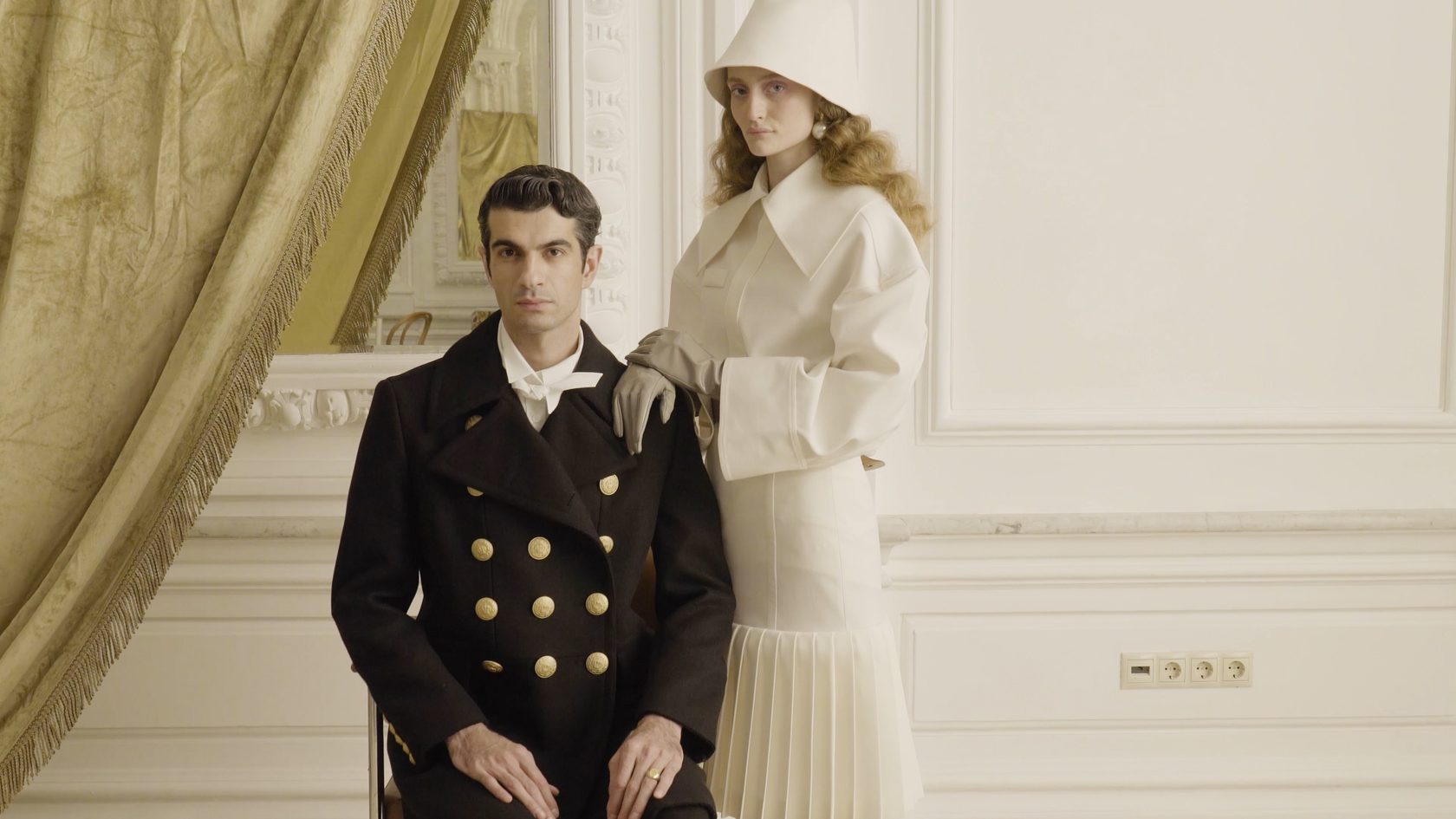
The only fear I might have had was about how to correctly use the money allocated for the project to make it look fresh, but not meagre. Before that, I had been making videos in completely different conditions and with much tighter budgets. When you call a model agency and ask for a model for Blueprint, it is immediately clear that this is a non-commercial project in which the model, however, will have a chance to stand out. When you request a model for TSUM, it is a completely different conversation. Natasha Goldenberg was extremely helpful with it. We barely had to interact with the complex and multi-level TSUM team at all. It is better for the film director to stay unaware of the technical issues solved at the top level. Thanks to Natasha, we could enjoy this total freedom and tranquillity.
We assembled a really big team. This is a significant difference between an editorial for a magazine and a commercial job. Here, we had much better technical equipment and much more people handling the equipment. Figuratively speaking, there were additional people, technicians, assistants, etc. for each device. All these people were found by my producer. I have a tight team who I understand, we work together all the time; it includes an operator, an editor, a colour correction specialist and a sound director. The rest of the technical and artistic team is formed separately for each project, based on the preferences expressed by the people on the set.
We assembled a really big team. This is a significant difference between an editorial for a magazine and a commercial job. Here, we had much better technical equipment and much more people handling the equipment. Figuratively speaking, there were additional people, technicians, assistants, etc. for each device. All these people were found by my producer. I have a tight team who I understand, we work together all the time; it includes an operator, an editor, a colour correction specialist and a sound director. The rest of the technical and artistic team is formed separately for each project, based on the preferences expressed by the people on the set.
PHOTO AND VIDEO: ALEXEI USTINOV
Since this was my first large-scale project, I was looking at everything in a new way and attracted new people who had not had a chance to work on large projects before. We invited Nastya Bezrukova, an artist. After the shoot for TSUM, she began participating in huge production projects.
I really enjoy discovering new people; for me, it is an important aspect of my work. In Blueprint, we had the principle of always working with new people. For them, it is important to do some work that will be published. Moreover, working with an art director is always a new step for young photographers and videographers. For us, this principle was economically efficient.
I really enjoy discovering new people; for me, it is an important aspect of my work. In Blueprint, we had the principle of always working with new people. For them, it is important to do some work that will be published. Moreover, working with an art director is always a new step for young photographers and videographers. For us, this principle was economically efficient.
ON HOW THE INDUSTRY CHANGES
Content creators have become younger as the related processes got more financially and technically accessible. You only need a smartphone to make a video nowadays. And yet, having talent is still a must.
In Moscow, if you are a girl and you look young, you have to constantly face the lack of trust. The more I work in the commercial environment in Russia, the more I understand how deep this gender-based system is rooted in the minds of both men and women. Some agents and producers, including women, calmly say: "You know, I would prefer a male director, just to be on the safe side, to be sure that everything goes well."A few years ago, I would not have understood the meaning of this sentence, but now I am greatly concerned with the subject. I understand how it all works, and I want to change it.
In Moscow, if you are a girl and you look young, you have to constantly face the lack of trust. The more I work in the commercial environment in Russia, the more I understand how deep this gender-based system is rooted in the minds of both men and women. Some agents and producers, including women, calmly say: "You know, I would prefer a male director, just to be on the safe side, to be sure that everything goes well."A few years ago, I would not have understood the meaning of this sentence, but now I am greatly concerned with the subject. I understand how it all works, and I want to change it.

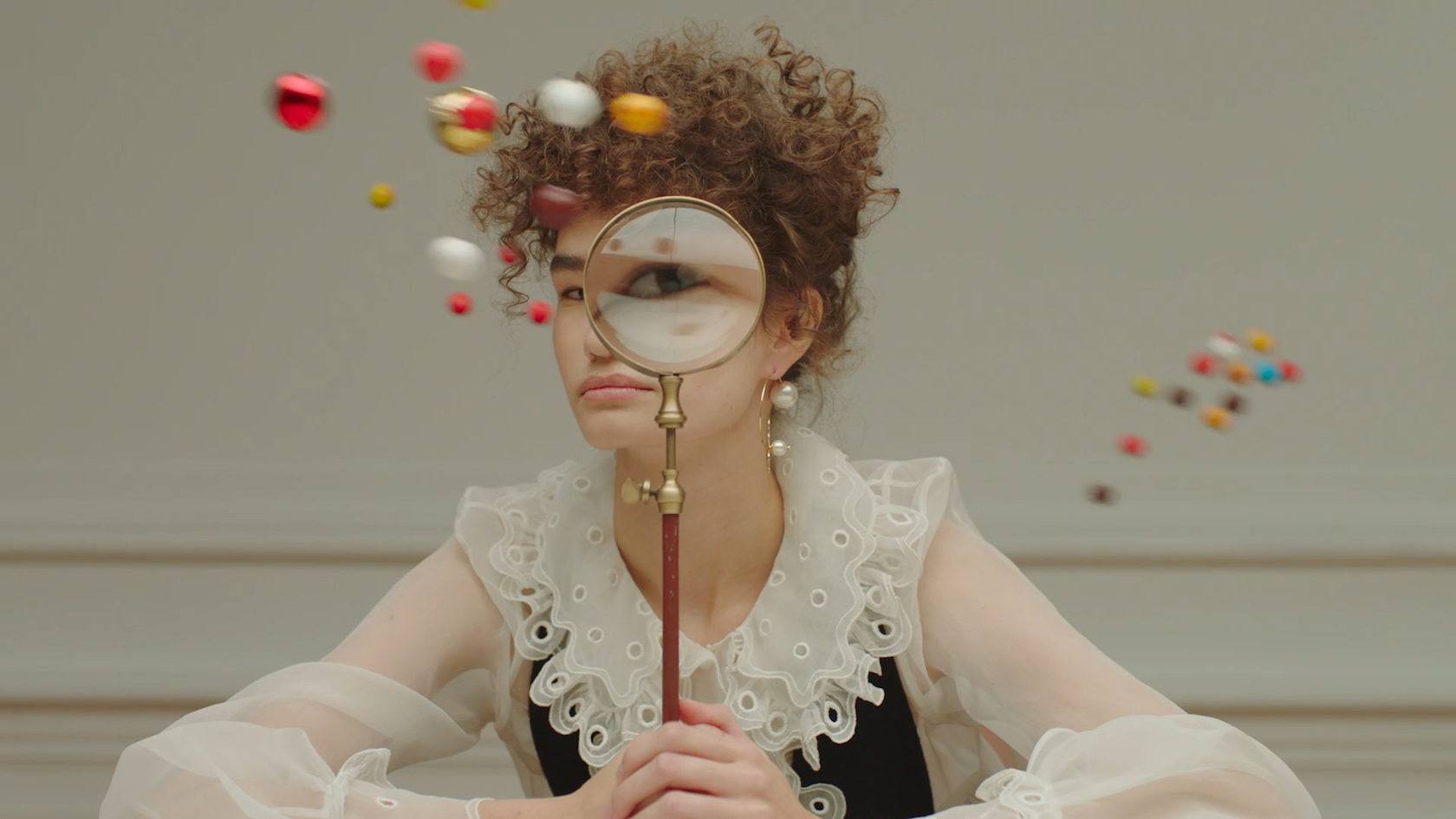


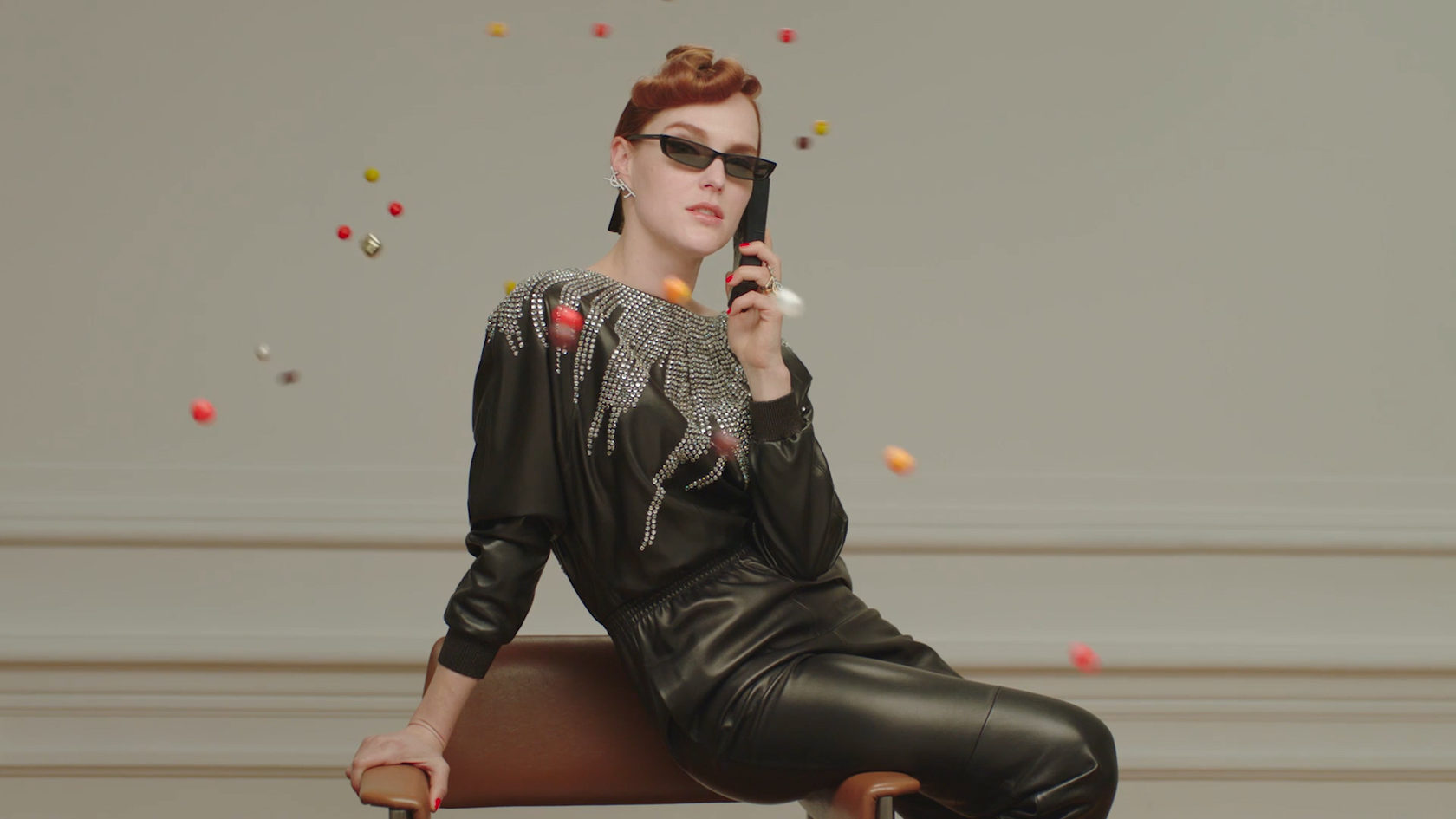

When The Village appeared in Moscow, small businesses they wrote about were only starting to emerge. At first, there was nothing, the magazine would write about the emerging projects, offering them huge discounts.
I BELIEVE THAT YOU FIRST NEED TO CREATE AN ENVIRONMENT, AND THEN IT WILL DEVELOP ITSELF. IF YOU MAKE A PEDESTRIAN STREET WHERE NO ONE HAS EVER WALKED, IT WILL SUDDENLY BECOME FILLED WITH PEOPLE. YOU JUST HAVE TO DO SOMETHING
I enjoy all manifestations of these initiatives, regardless of how clumsy they may be. The only thing that really bothers me is that, in Russia, many people simply do not see the point in producing good content, not because they do not want to, but because this is how it is all arranged here. In the 2000s, in the period of new financial opportunities in this field, certain people managed to occupy the key positions and keep holding onto them tightly to make sure everything runs in a groove. This produces the multiple clichés. There are very few people who are willing to take the risk.
We do not have any exact information on who and how consumes this content, what kind of people watch these videos, whether they buy something after watching them, or whether they discover new brands. Without these data, it is too scary to invest big money in such projects. Only luxury brands or, on the contrary, very small independent brands, doing anything to stand out, can afford this. I would not say that video production in our country lags far behind, but it feels like not enough attention is paid to this area. It seems like, in Russia, photo editorials are doing a better job at it, but this will not stay like this forever.
In this regard, our work with TSUM is very important as it demonstrates that some things are changing. A film editor once said to me:"You made this video for TSUM. Later, I edited a clip for a big company, and your video was among the references."
We do not have any exact information on who and how consumes this content, what kind of people watch these videos, whether they buy something after watching them, or whether they discover new brands. Without these data, it is too scary to invest big money in such projects. Only luxury brands or, on the contrary, very small independent brands, doing anything to stand out, can afford this. I would not say that video production in our country lags far behind, but it feels like not enough attention is paid to this area. It seems like, in Russia, photo editorials are doing a better job at it, but this will not stay like this forever.
In this regard, our work with TSUM is very important as it demonstrates that some things are changing. A film editor once said to me:"You made this video for TSUM. Later, I edited a clip for a big company, and your video was among the references."
SOMETHING NEW IS EMERGING; THE VIEWERS ARE NOT FOOLS AND ARE READY TO SEE IT. WE NO LONGER HAVE TO REPRODUCE THE SAME IMAGES AGAIN AND AGAIN. PEOPLE ARE KIND OF BLIND TO OLD IMAGES, COLOURS, AND LIGHT; NO ONE PERCEIVES THE CONTENT THAT HAS BEEN SHOWN MANY TIMES
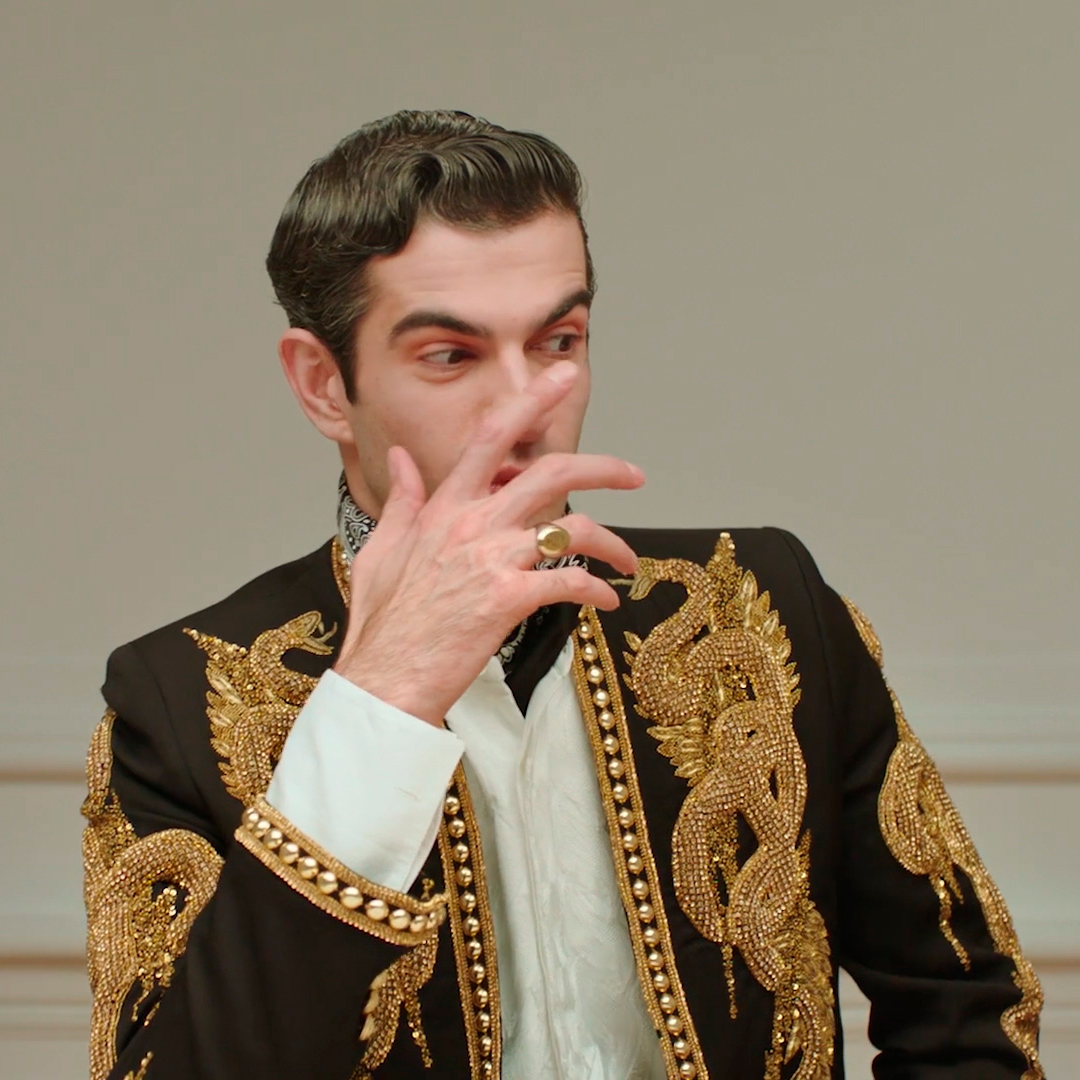
In my reality, among what I see and like, there is a style compiled by the Nowness website. This is the first media where videos have become the prevailing content. It has an own aesthetics with noisy images and the frequent use of retro-effects, while remaining relevant for the people living now and for their simple experiences. It is through all this, in my opinion, that the trend for all natural has developed so widely in the current commercial projects.
NADIA BEDZHANOVA
Director: Nadia Bedzhanova, independent director, photographer for Paper, Thom Brown, published in Metal, Dazed
Film: J.Kim Eating Disorder
Duration: 1 minute
Budget: $ 2000
Team: 4 people
Production time: one month
Film: J.Kim Eating Disorder
Duration: 1 minute
Budget: $ 2000
Team: 4 people
Production time: one month
ON MAKING FASHION FILMS
A fashion film is a fairly new genre. It is basically a beautiful video associated with a particular brand. The difference between fashion films and advertisement is in a hint of artistry and in the budget. People often associate a campaign or an advertisement with huge fees, a big crew, and most importantly, a total focus on the product. A fashion film is a more creative project, in which the idea or the story takes priority over the product.
IDEA
I have been working with Jenya Kim for several years now. For the last film, she proposed the idea of a girl picking food to match her clothes. In my head, this idea was immediately associated with an obsessive-compulsive disorder: it manifests itself differently for everyone and, for our heroine, it is like this.
We met at a Korean restaurant and asked the manager for permission to shoot. Then we ordered gimbap to see how cinematic it would look. It turned out to be very cinematic and very tasty as well. While eating, we were thinking over the casting. Anka Tsitsishvili, our friend and muse, featured in our previous video, recommended Marina Vasilyeva. We contacted her, and here is the result.
We met at a Korean restaurant and asked the manager for permission to shoot. Then we ordered gimbap to see how cinematic it would look. It turned out to be very cinematic and very tasty as well. While eating, we were thinking over the casting. Anka Tsitsishvili, our friend and muse, featured in our previous video, recommended Marina Vasilyeva. We contacted her, and here is the result.
TEAM
Only four people worked on the film: Jenya Kim, Marina Vasilyeva, Katya Gorelova as the makeup artist, and me. I love small teams; I try to put a piece of my soul into every creative work, which is easier done without too many people around. And, unfortunately, there is still sexism on the sets.
PROCESS
We filmed in digital using the 8 mm film. At that moment, the film had not yet been overused. Now, they use 8 mm film for making the campaigns of many leading brands, Vogue promos and many other videos. My camera is currently on sabbatical.
The entire project, including post-production, took about a month. We shot in Moscow, in one shift. After that, I returned to New York. The development and transfer of the films took about a week, then there was editing. For the video, we decided to keep only the film; we liked the look of these three windows. In addition, there were problems with colour correction of the digital material. We left it only for the stills.
The entire project, including post-production, took about a month. We shot in Moscow, in one shift. After that, I returned to New York. The development and transfer of the films took about a week, then there was editing. For the video, we decided to keep only the film; we liked the look of these three windows. In addition, there were problems with colour correction of the digital material. We left it only for the stills.
ON THE NEW VISUAL CULTURE
As I see it, a new visual culture is the evolution of art and its maximum integration into everyday life. Visual culture is becoming dominant in many ways, due to the popularity of social media, videos and video games and the availability of film production.
Some people, especially the faceless mass of female Instagram bloggers, go out of their way (or clothes) trying to get attention. Others make every effort to avoid this in order to reach their potential and express themselves through images, without setting any commercial goals.
Some people, especially the faceless mass of female Instagram bloggers, go out of their way (or clothes) trying to get attention. Others make every effort to avoid this in order to reach their potential and express themselves through images, without setting any commercial goals.
IN MY OPINION, THE MAIN THING ABOUT THE NEW VISUAL ARTISTS IS THEIR SUBJECTIVITY. IN ESSENCE, THIS IS POV, FIRST PERSON VIDEOS. WITH THE EMERGENCE OF EASILY AVAILABLE CAMERAS, EVERYONE BEGAN EXPRESSING THEMSELVES THROUGH VIDEOS. THE EGOCENTRISM FLOURISHES, ESPECIALLY IN THE USA. CELEBRITIES BECOME PRESIDENTS AND THEIR TWITTER PAGES ARE THE MAIN SOURCES OF NEWS
We browse through Instagram stories from different parts of the world like through pages of a book. It is simply impossible to concentrate for any longer. The WOW effect must be created in the first second to make the viewer watch the video to the end. And it seems to me that this WOW effect is currently created through calm, simple and honest things, in contrast to the packed action or loud sounds used in advertising. It all has become so very intimate and personal that the audience basically lives other people's lives. If we manage to support these simple things, a visual style is created, and people are interested in its development and content.
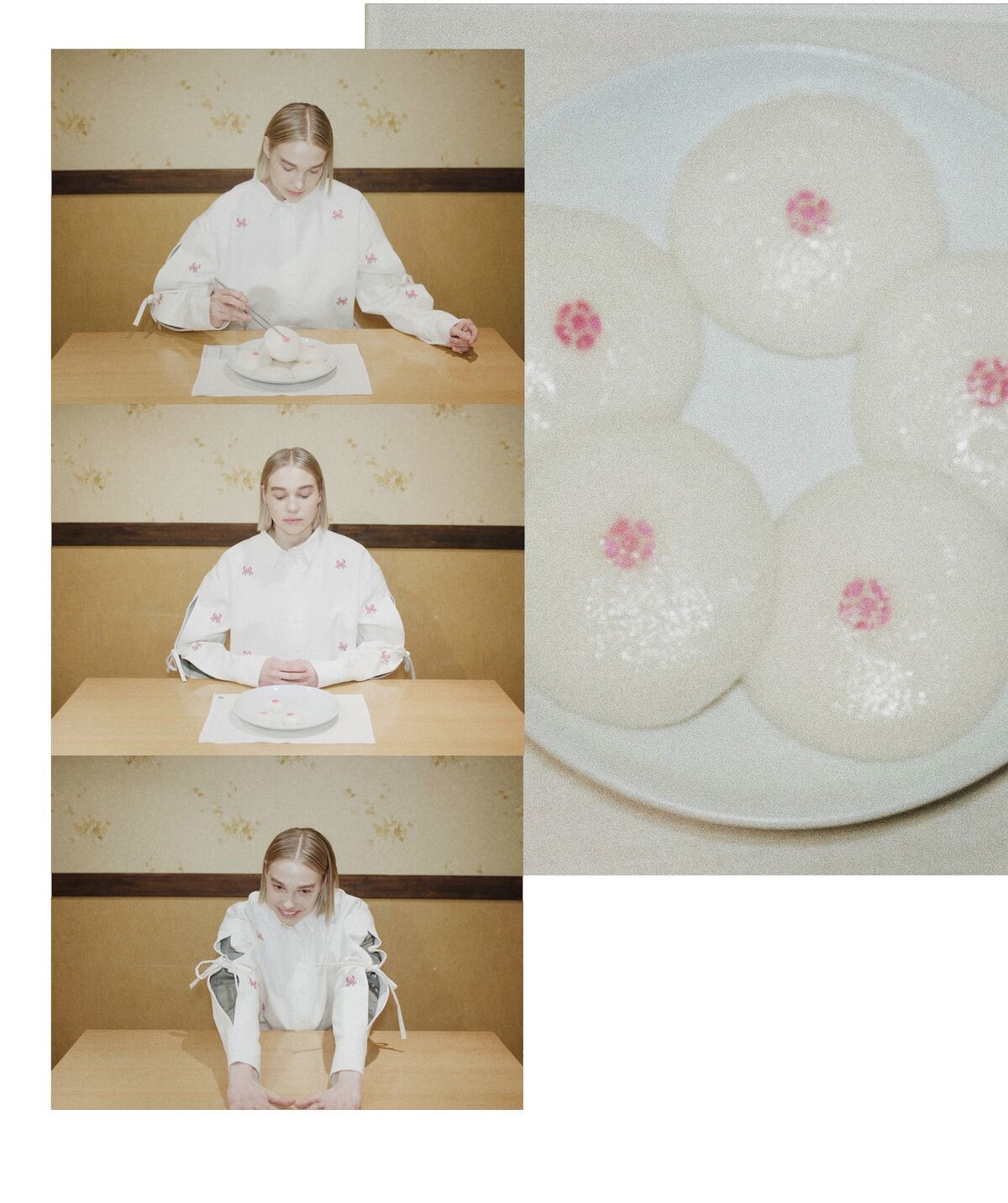
For the new visual culture to become true Culture, loads of work must be done. I am trying to use its elements in big movies; next year, we will see if it worked out. In September, we start the post-production of my debut full-length motion picture starring Marina Vasilyeva and Buddy Dures. Sometimes you want more references to the classics or even at least some class, less vulgarity. It is all the same now, all is merged into a single viscous blogger mass headed by Kylie, and we keep clicking and swiping.
It may be that I judge from the American point of view, as I spend more time there, and from the point of view of a cinematographer and a video maker with ten years of professional experience. Moscow inspires me, especially my old friends. We create something together, and this is priceless. The mixing of cultures, the creation of a super-culture, beyond the physical boundaries, the search for something universal that exists in the generation of the entire world; these are the topics that concern me.
The short feature film genre has been exhausted; very few people manage to keep the audience at the screen (mainly, of their phones) for longer than one minute. From my observations, Russian film schools lack the practical skills and need to get outside the limits of the Russian heavy genre. If you want to shoot films, understand the truth about WHAT you actually want to make, take any camera and try it. The main thing is to remain honest.
It may be that I judge from the American point of view, as I spend more time there, and from the point of view of a cinematographer and a video maker with ten years of professional experience. Moscow inspires me, especially my old friends. We create something together, and this is priceless. The mixing of cultures, the creation of a super-culture, beyond the physical boundaries, the search for something universal that exists in the generation of the entire world; these are the topics that concern me.
The short feature film genre has been exhausted; very few people manage to keep the audience at the screen (mainly, of their phones) for longer than one minute. From my observations, Russian film schools lack the practical skills and need to get outside the limits of the Russian heavy genre. If you want to shoot films, understand the truth about WHAT you actually want to make, take any camera and try it. The main thing is to remain honest.
TEXT BY KARINA NIKIFOROVA